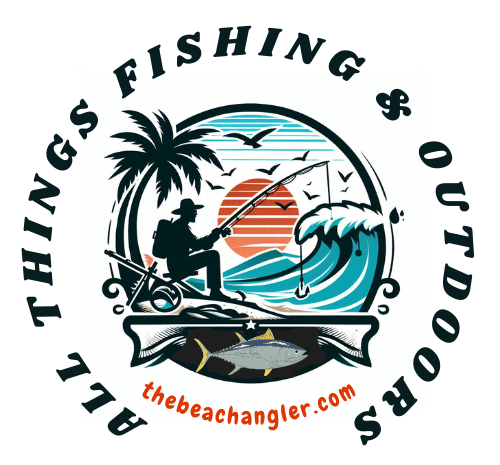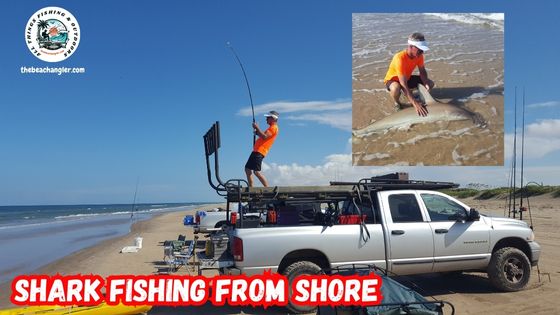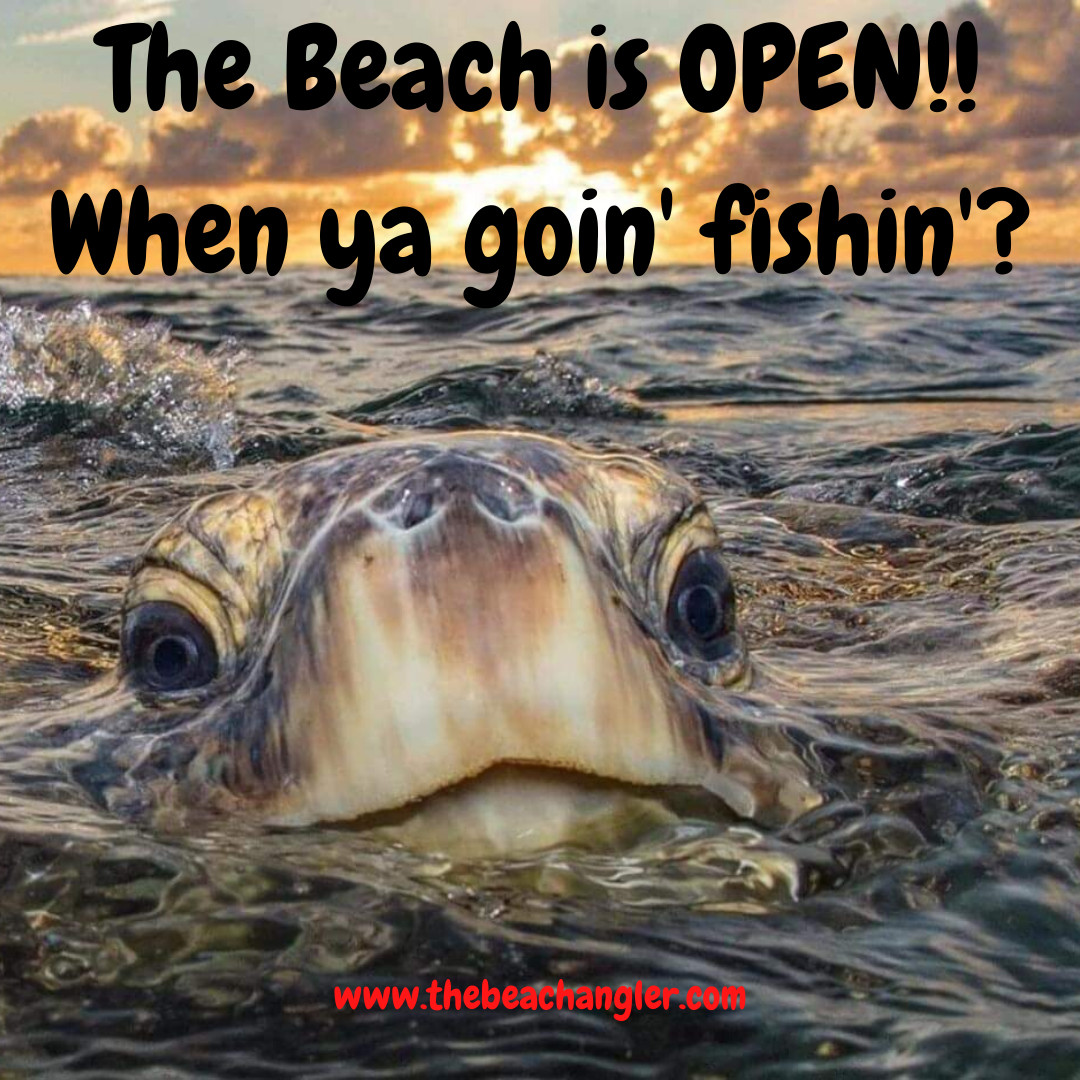Catching sharks from the shore isn’t just about the catch itself; it’s about the pulse of excitement you feel standing there, rod in hand, facing the vast ocean. The idea of doing battle with one of the ocean’s majestic creatures while your feet are still on sand is exhilarating.
QUICK LOOK Tips for Catching Sharks from the Shore
- Shark Fishing Equipment: The right gear can make or break your shark fishing experience. Investing in quality equipment isn’t just about improving your chances of catching sharks from the shore; it’s about ensuring you have a safe and enjoyable time out there on the sand.
- Shark Knowledge: Understanding which shark species you might encounter is crucial for anyone looking to fish from the shore. Different species have varying behaviors and requirements, so getting familiar with them helps you prepare better.
- Fishing Location: Finding the right location can feel like half the battle in fishing for sharks from the shore. Choosing your spot wisely can significantly increase your chances of a successful catch.
- Shark Fishing Techniques: Shark fishing tests your endurance as much as it tests your gear. Consistent application of learned techniques brings you closer to mastering the art of shoreline shark fishing.
- Best Times: Choosing the right time can significantly influence your success when fishing for sharks from the shore. Sharks are not always around, and their movements are often dictated by natural cycles and conditions.
- Safety: When you’re out there catching sharks, handling them correctly is an important part of the process. Respecting these incredible creatures ensures your safety and theirs
- Shark Conservation: Fishing for sharks from the shore isn’t just about skill and excitement. It’s also about understanding the legal and ethical landscape. Adhering to regulations benefits both the marine environment and your fishing experience, ensuring sustainability of shark populations.
Fishing for sharks from the shore has a unique appeal, offering an attainable adventure to those often distanced from deep-sea fishing expeditions. It’s available for anyone willing to explore their local beaches or coastal areas.
For many anglers, it’s not just about a fishing trip; it’s an opportunity to connect with nature in a way that feels both intimate and thrilling. From a conservation standpoint, catching sharks from the shore can actually be a more sustainable and eco-friendly fishing approach.
Unlike boat fishing, which might have negative impacts on marine habitats, shore fishing minimizes environmental disturbances. This method also often leads to catch-and-release practices, promoting conservation of shark populations.
Personal stories from fellow shore anglers really highlight the excitement. Anglers talk about the thrill of feeling the sharp tug on their line or the satisfaction of spotting fins cutting through the water. These moments are not only about the challenge but also about being part of something bigger. It’s about the stories you get to share and the respect you build for these incredible sea creatures.
Whether you’re new to fishing or a seasoned pro looking for a new challenge, fishing for sharks from the shore offers a unique experience that hooks you not only with its challenges but with the promise of adventure in every cast.
Essential Equipment for Catching Sharks from the Shore
The right gear can make or break your shark fishing experience. Investing in quality equipment isn’t just about improving your chances of catching sharks from the shore; it’s about ensuring you have a safe and enjoyable time out there on the sand.
- Choosing the appropriate fishing rod and reel is your first step. For shoreline shark fishing, a taller rod – typically between 10 to 12 feet – gives you the leverage you need to cast past the breaking waves. Pair this with a robust reel capable of holding ample line, at least 300 yards, to handle those long runs sharks are known for.
- A strong line is crucial, as it acts as your only physical link to the shark. Braided line is a popular choice due to its strength and thin diameter, which allows you to fit more line onto your reel. Consider adding a heavy-duty monofilament leader to withstand the shark’s abrasive skin and sharp teeth.
- Your bait and lures are your lures of persuasion, literally. Fresh fish chunks like mackerel or bonito usually attract more hits than artificial lures. Circle hooks are recommended as they reduce injury to the shark, elevating your practice of responsible fishing.
- Don’t overlook safety equipment. A pair of reliable pliers for de-hooking, gloves for handling the catch, and a sturdy harness or belt for extra support during a long fight can make a big difference. You’re dealing with powerful animals, so gear that keeps you safe while respecting the creature is essential.
- Bait deployment gear for getting your shark gear far off the beach where the big fish roam. This could be kayaks, RC bait boats, or even fishing drones. All of these will allow you to reach fishing areas you could never cast to from the beach.
Packing a waterproof tackle box ensures your gear stays organized and protected from the elements. Keeping spare hooks, lines, and leaders in there will keep you ready for any mishaps or unexpected conditions.
Equipping yourself properly sets the stage for success. The right gear gives you confidence, making the difference between walking away with a few tales versus walking away with a tale about ‘the one that got away.’
Know Your Prey – Common Shark Species Caught from the Shore
Understanding which shark species you might encounter is crucial for anyone looking to fish from the shore. Different species have varying behaviors and requirements, so getting familiar with them helps you prepare better.
Blacktip sharks are a common sight for shoreline anglers. Known for their strong runs and aerial acrobatics when hooked, they are a favorite among many. They frequent warmer coastal waters and often come close to the shore, especially during their annual migration.
Another species you might stumble upon is the bonnethead shark, a smaller relative of the hammerhead. Their diet primarily consists of crustaceans and small fish, making them less aggressive towards larger baits. Bonnetheads are often found in shallow waters and can provide both a challenge and an exciting catch.
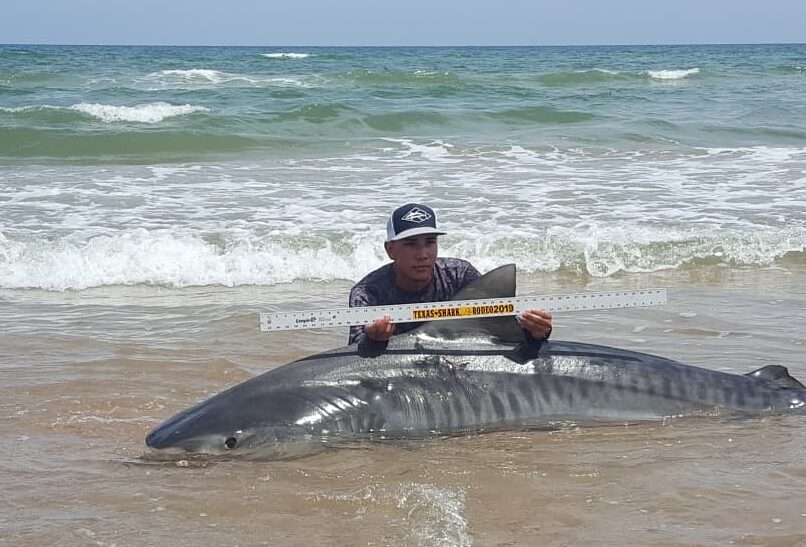
Sandbar sharks might also make an appearance. These are known for their characteristic high dorsal fin and preference for sandy bottoms, which is often where you’ll find them congregating close to the shore. Due to their powerful build, they offer an exhilarating challenge as they can put up quite a fight.
Knowing the migration patterns of these species helps. Sharks move with the seasons—warmer waters in the summer and cooler ones in the winter. This means the time of year can greatly influence what you might encounter off the coast.
It’s important to respect size and catch limits for these species, as they play a significant role in maintaining ecological balance. Familiarizing yourself with regulations before heading out ensures you contribute positively to conservation efforts.
Identifying the right shark can be an exciting part of the adventure. You learn not only about the animal you might catch but also about the environment in which they, and you, are temporarily sharing space.
Picking the Perfect Spot for Catching Sharks from the Shore
Finding the right location can feel like half the battle in fishing for sharks from the shore. Choosing your spot wisely can significantly increase your chances of a successful catch.
Start by looking for beaches with a reputation for shark sightings. Local fishing reports and online forums are great resources for scouting potential hotspots. Speak to seasoned local anglers who might offer insights into the best times and locales within your area.
Tides play a crucial role. Sharks often come closer to the shore during high tide when smaller fish are more accessible, making these times ideal for setting up your gear. Understanding how tides work and planning your trip accordingly can maximize your opportunities.
Weather and water conditions should not be overlooked. Keep an eye on wind patterns, water temperature, and clarity, as these can impact shark behavior. Overcast days with slightly choppy conditions tend to bring sharks in closer to shore, while clearer skies might see them venturing further out.
Advanced technology can be a huge advantage. There are apps and marine charts available that offer real-time data on wave conditions, currents, and even shark activity in specific areas. These tools can help pinpoint zones with higher fish activity, guiding you to promising fishing grounds.
Finally, consider the natural features of the landscape. Breakwaters, piers, and estuaries can attract a variety of marine life, making them prime spots for shark fishing. Sharks use these areas as hunting grounds, thanks to the abundance of prey drawing them in.
Choosing the right location is all about understanding your environment. It sets the stage for your entire fishing experience, offering the potential for not just a catch, but a tale worthy of sharing.
Mastering the Techniques of Effective Casting Reeling and Bait Dropping
- Getting your casting right is key. Start by practicing your cast before you even hit the beach. Longer casts get your bait beyond the breaking waves where sharks are likely to be prowling. Maintaining control over your rod during the cast is crucial to avoid tangling and ensure your bait lands properly.
- If you can’t cast far enough, consider using kayaks, RC bait boats, or fishing drones to deploy your shark baits. You can drop your baits with precision, accuracy far past your maximum casting distance.
- When it comes to reeling, the technique often varies depending on the shark species. With blacktip sharks, for instance, prepare for quick, sudden runs. They’ll test your skills and your line’s limits, so it’s important to let them run with the drag set just right—tight enough to hear that thrilling, steady line peel, yet loose enough to prevent breakages.
- Consider using the ‘pump and wind’ technique when battling larger sharks. This method involves lifting the rod to about 10 o’clock, then reeling in as you lower it. This helps maintain pressure on the shark while giving you better control.
- Learning when to adjust your drag is a skill in itself. During initial runs, let the shark have line to avoid snaps, but once it’s tired, gradually tighten the drag to bring it closer to shore. Remembering to adjust the tension on your reel can turn the tide in your favor.
- An optimal setup should ensure your safety and the shark’s. Using appropriate leaders and hooks makes a difference. Heavy-duty leaders protect against sharp teeth, while circle hooks generally secure better and allow for safer release.
- Lastly, remain patient and keep a steady hand. Shark fishing tests your endurance as much as it tests your gear. Consistent application of learned techniques brings you closer to mastering the art of shoreline shark fishing.
For more on using drones for shark fishing check out my review of the Swellpro Fishermen MAX drone.
Timing is Everything – The Best Times and Seasons for Catching Sharks from the Shore
Choosing the right time can significantly influence your success when fishing for sharks from the shore. Sharks are not always around, and their movements are often dictated by natural cycles and conditions.
- The moon phases have a notable impact on shark activity. During a full moon, the increased light seems to boost their hunting behavior, making them more active and more likely to feed closer to shore. Similarly, a new moon can also lead to increased activity due to tides being more pronounced.
- Seasonal patterns also matter. Different shark species exhibit distinct seasonal movements, following warmer waters or migrating during specific times of the year. Blacktip sharks, for instance, are known to migrate in large numbers along the coastlines during winter months.
- Tidal movements are crucial. Sharks tend to hunt more actively during high tide, taking advantage of the increased water depth to chase prey that comes closer to the shore. Planning your trip around tide schedules ensures your bait is in the water when sharks are actively feeding.
- Local knowledge is invaluable. Connect with local anglers or consult regional fishing reports to know specific trends and behaviors unique to the area you plan to fish in. Such insights can point you to the best times and places, often saving you from fruitless hours on the beach.
Understanding the timing of your fishing trips ensures that your efforts are met with the best chances of encountering sharks. It’s about aligning your intuition and research with nature’s rhythms to boost your odds of success.
Safety First Means Handling Sharks Responsibly and Safely
When you’re out there catching sharks, handling them correctly is an important part of the process. Respecting these incredible creatures ensures your safety and theirs. A thorough understanding of handling techniques will boost your confidence and contribute to conservation efforts.
- First, always have the right tools on hand. Strong gloves, long pliers, and hook removers help you manage the sharp features of these animals safely. These tools provide the distance and grip needed to handle a hooked shark securely.
- When the shark is near, keep it in the water as much as possible. Avoid dragging it onto the sand unnecessarily. If you must beach the shark for de-hooking, be quick and gentle. Position the shark in the shallow water with its head facing seawards, reducing stress and making release easier.
- Learning how to de-hook efficiently is vital. Use a pair of long-handled pliers or a de-hooking tool. This helps you remove the hook without causing injury to your catch or yourself. Circle hooks are typically easier to remove and cause less harm, an excellent choice for those practicing catch and release.
- It’s crucial to recognize the shark’s strength and potential unpredictability. Always stand clear of their mouth and tail, as even smaller sharks can deliver a powerful bite or whip of the tail when frightened or restrained.
- Finally, practice releasing the shark safely back into the water. Gently move it back and forth to help it regain strength. It’s a powerful moment, watching it swim off after ensuring its survival.
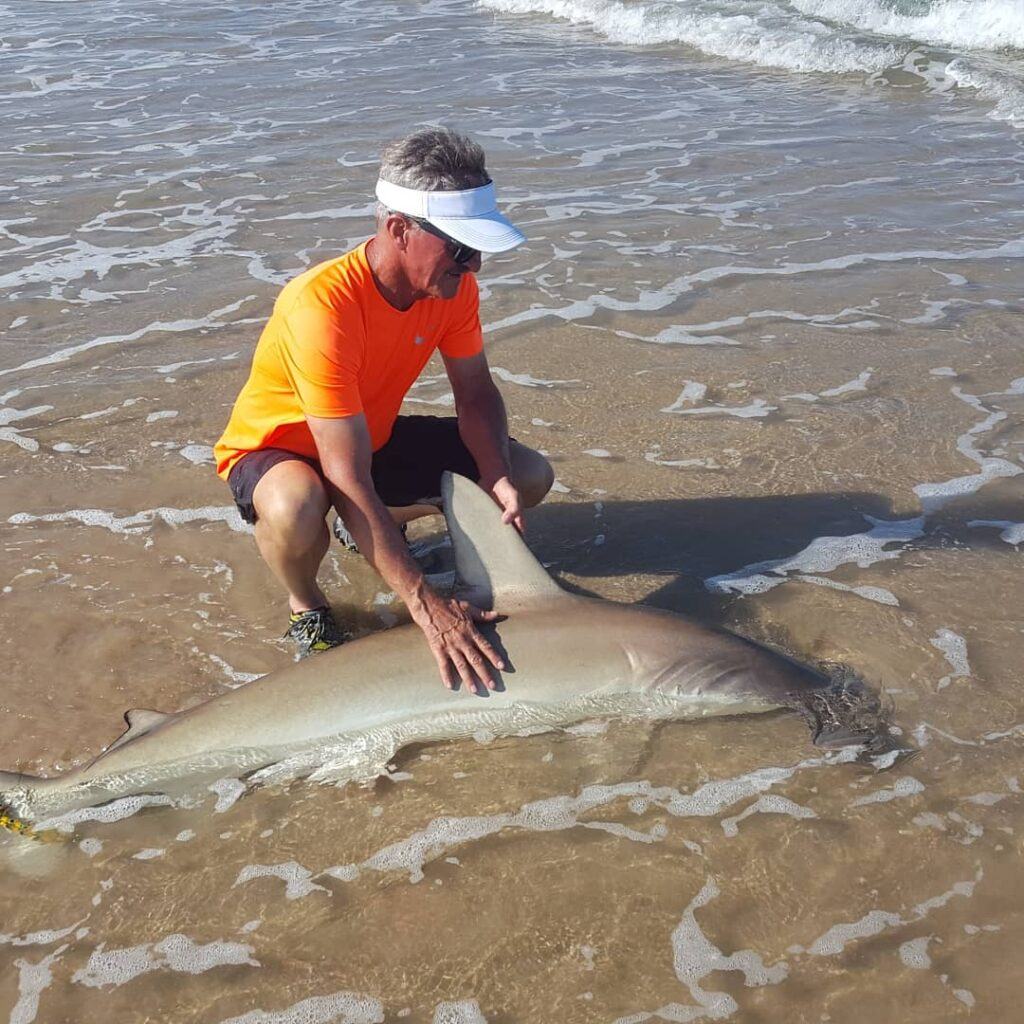
Handling sharks with care is a vital part of the fishing experience. It shows respect for the ocean’s inhabitants and maintains the ecological balance, making your fishing responsibly rewarding.
Conservation and Legal Obligations when Fishing for Sharks from the Shore
Fishing for sharks from the shore isn’t just about skill and excitement. It’s also about understanding the legal and ethical landscape. Adhering to regulations benefits both the marine environment and your fishing experience, ensuring sustainability of shark populations.
- Each fishing area comes with its own set of rules and regulations concerning shark fishing. These include specific licensing requirements, size limits, seasonal restrictions, and protected areas where shark fishing is prohibited. Familiarize yourself with these laws before you even hit the beach to avoid unintended breaches.
- Knowing which species are protected is essential. Some sharks are off-limits due to their threatened or endangered status. This includes certain hammerheads and some varieties of great whites, depending on where you’re fishing. Being aware of these can prevent unintentional catches from turning into illegal activity.
- Respect the catch and release guidelines when applicable. Many regions will enforce a release system to ensure juvenile sharks and protected species are not kept. Practicing responsible fishing helps support these conservation efforts and fosters a more sustainable shark fishing practice.
- Engage with local conservation programs. They often offer resources and information which can enhance your understanding of the delicate marine ecosystem. Participation in tagging programs, for example, assists with tracking and conserving shark populations.
Staying informed and considerate of your impact makes you not just a better angler, but a steward of the sea. It aligns your personal interests with the broader goals of environmental conservation, ensuring those thrilling catches can continue for generations to come.
Final Thoughts and The Future of Fishing for Sharks from the Shore
Fishing for sharks from the shore offers a unique connection to nature that many cherish, but looking forward, the balance between recreation and conservation becomes even more crucial. The future of shoreline shark fishing depends on how responsibly we act today.
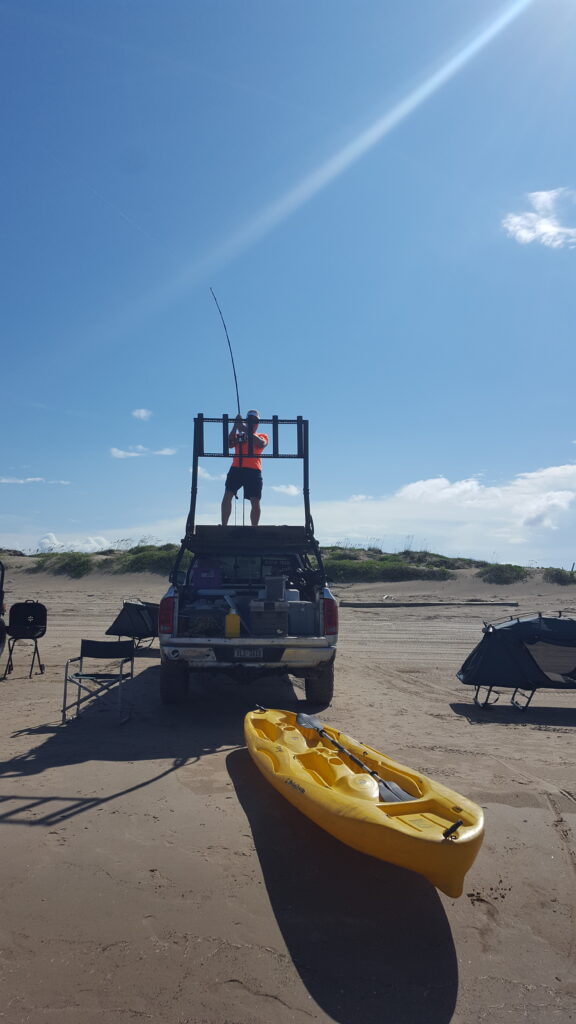
Advancements in fishing technology continue to evolve, providing anglers with more efficient gear, improved safety tools, and better conservation tools like more reliable catch-and-release hooks. These improvements make the sport safer and more sustainable while enhancing the angler’s overall experience.
Education is a pivotal part of this journey. With more awareness about marine life and the impact of fishing, both current and upcoming anglers can foster a more respectful approach to the sport. Understanding sharks’ roles in the ecosystem encourages practices that support their preservation.
It’s about cultivating a mindset that values the thrill of the chase while prioritizing the ecological balance of the marine environment above all. By sharing experiences, tips, and stories, we build a community that supports sustainable fishing practices and values the oceanic treasures before us.
Shoreline shark fishing, when done with responsibility and respect, promises to remain an exciting and rewarding endeavor. As you chase those big catches, remember to keep both personal ambition and environmental responsibility in mind, ensuring that the wonders of shark fishing can be enjoyed for years to come.
Have you tried shark fishing from the shore? If so, what have been your experiences, tips, and suggestions? Please leave them in the comment section below so we can all learn from each other and become better shark fishermen.
Check Out Our Most Recent Tips and Tactics Articles:
- Saltwater Fishing For King Salmon: 4 Top Strategies.

- Surf Fishing With Lucky Craft Lures
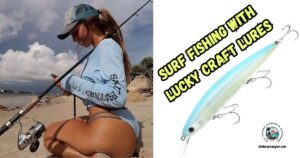
- Tips And Tactics For Saltwater Fishing With Spoons
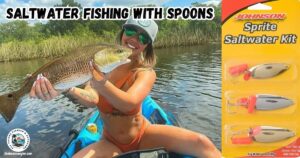
- What Is Sail Line Fishing And How To Use It?
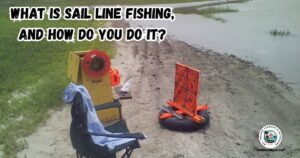
- 8 Tips on Wade Fishing The Flats For Redfish And Black Drum

- How The Wind Can Be Your Friend When Fishing Inshore Waters
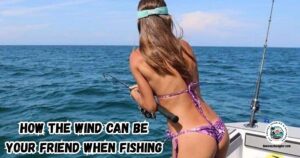
As always, stay safe, enjoy the journey and please try to leave it cleaner than you found it. If you have any comments, questions, ideas, or suggestions please leave them in the comment section below and I’ll get back to you ASAP. You can follow us on Facebook: Rex The Beach Angler, Instagram: thebeachangler7, Twitter: @AnglerBeach, and YouTube: Man Art Creations.
P.S. – Thanks so much for checking out our blog, we really appreciate it. Just so you know, we may receive a commission if you click on some of the links that appear on our site. This helps us keep our content free and up-to-date for everyone. We appreciate your support!
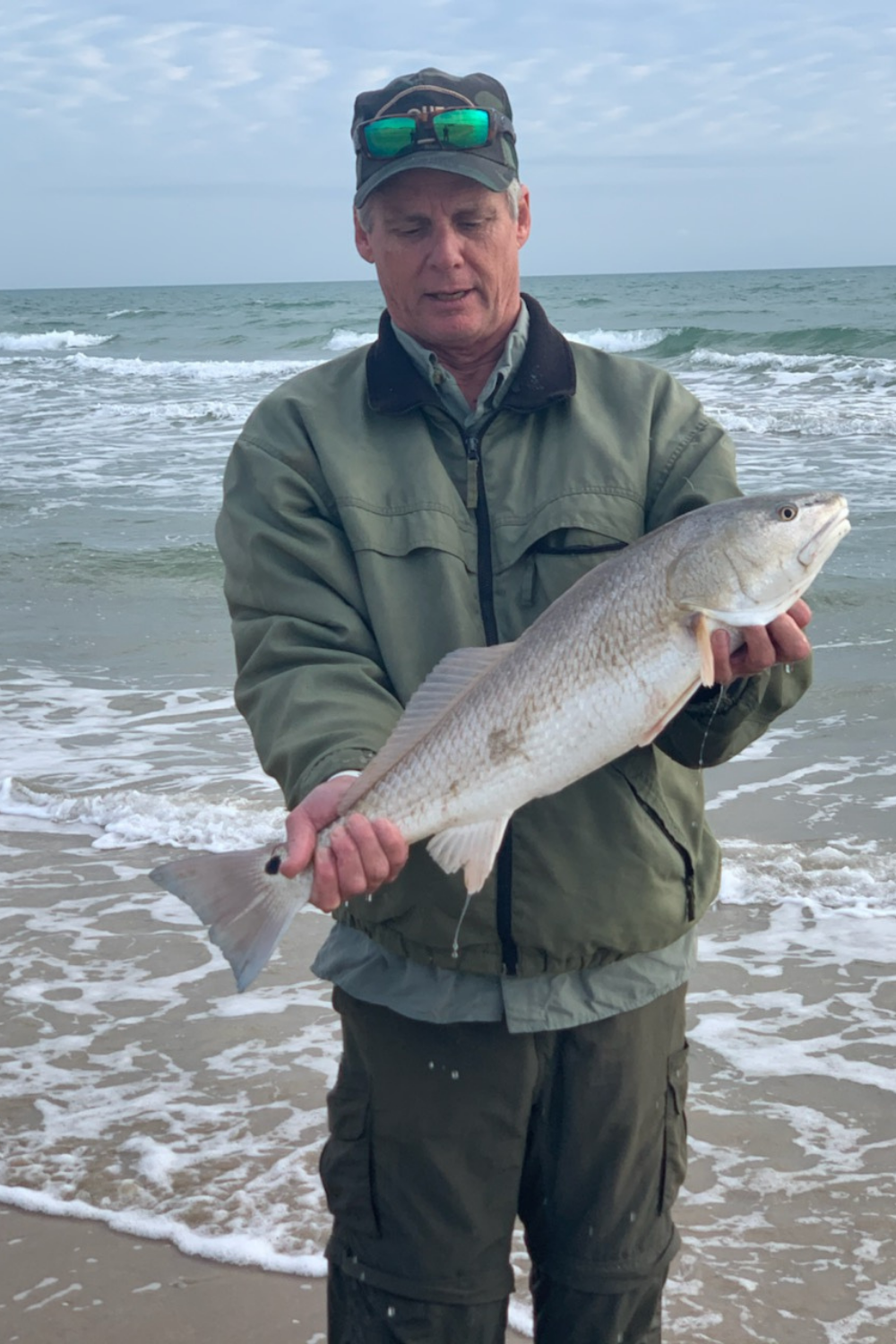
A life long surf fisherman with 50+ years of experience, I am also an avid hunter and outdoorsman. I will be sharing my passion for the outdoors with you so be prepared for hunting, fishing, camping, hiking and more. Along with gear reviews and the latest trends and innovations in the outdoor industry.
